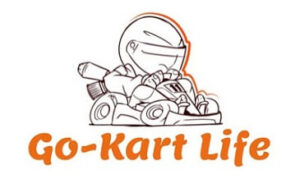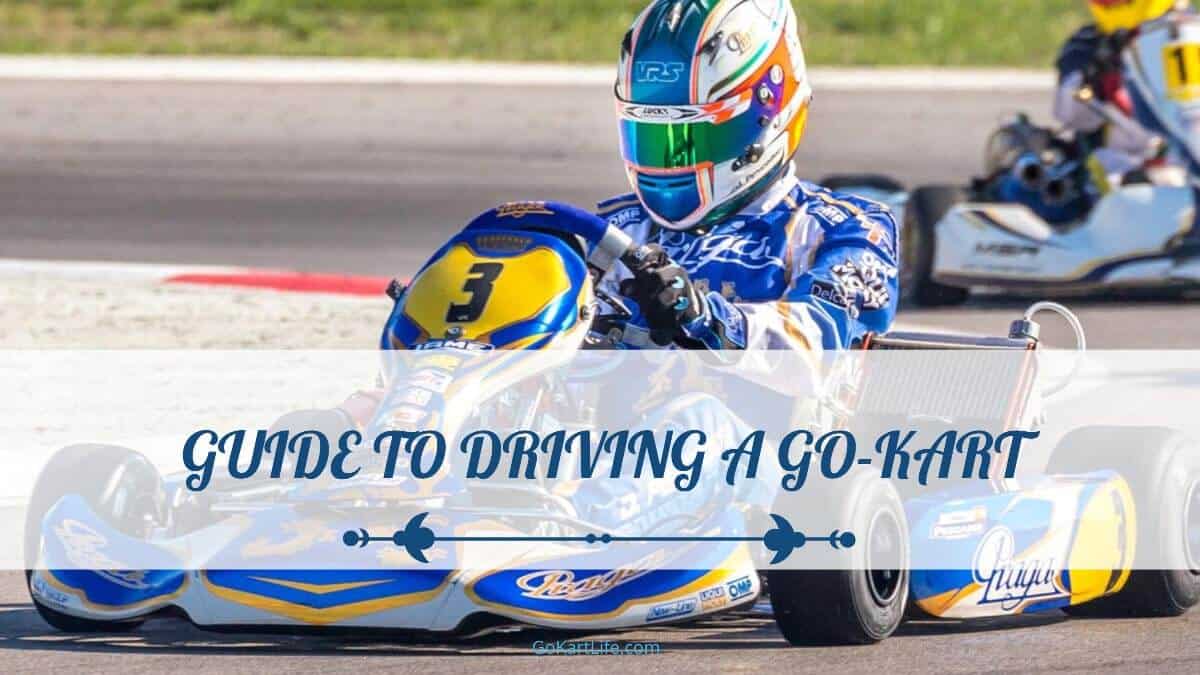Go-karts are a source of fun for all ages. However, go-karts are powerful machines that command your respect. Despite what Mario, a pixelated Italian plumber, suggests, go-karts can be challenging to handle.
Most go-karts can drive at speeds around 50 mph, but there are plenty called superkarts that can reach speeds of over 100 mph. They must be driven like a vehicle in regard to speed and handling. When driving, you must take many factors into consideration, including your surroundings and road surface.
This guide will illustrate how to drive a go-kart on any track.
Guide to Driving a Go-Kart – Kart Types
Not all go-karts are the same. Every go-kart has different top speeds, handling, acceleration, even weight distribution is a crucial factor that is different. You should know how your go-kart can handle the drive.
There are many different karts:
- Enduro go-karts – Can be driven inside and outside. They can reach moderately high speeds. The drivers usually sit very low to the base of the kart to allow for good aerodynamics.
- Sprint go-karts – These are probably the most versatile go-karts. Sprint go-karts can be used on a variety of tracks. Depending on the end and kart, they can have incredible speeds.
- Oblong (four-cycle) go-karts – These karts use four-stroke Briggs and Stratton engines. They are considerably slow, especially compared to other go-karts, but they are fuel-efficient.
- Super karts – As the name implies, these karts are superior to others in many attributes. They usually boast a 250-cc engine, which makes them capable of reaching very high speeds very quickly.
Go-karts can also be different in how they are powered. Some go-karts are gas-powered, some are electric. They will handle very differently. Electric go-karts can accelerate faster and even reach higher speeds. Furthermore, the battery on an electric go-kart evenly distributes the weight of the vehicle, so it will handle better than gas-powered go-karts.
Before you climb into the seat of a go-kart, you must know some of the specifics of the vehicle.
The Different Types of Go-kart Tracks
There are many different types of go-kart tracks:
- Outdoor – the most common type of track. These tracks are frequently made of asphalt
- Indoor
- Dirt
There are various other sub-types, too, depending on the material of the track, etc. Each different type of go-kart track will require different handling.
Related Article: Discover The 10 Best Off-Road Go-Karts For The Ultimate Adventure!
Indoor Tracks Can Be More Restrictive
Indoor tracks are usually short circuits because they are restrained between four walls. Therefore, you will not be able to reach top speeds like you can on an outdoor track.
Furthermore, practically every go-kart driving on an indoor track is electric, so there are no fumes and less noise. These electric karts could be against the norm from outdoor karts, including:
- Handling
- Acceleration
- Top speeds
The materials used for indoor go-kart tracks are usually more slippery than with outdoor tracks. You could slip or even spin more easily than with an outdoor track. You need to try to handle your kart more smoothly and maybe with less power.
Even worse, indoor tracks usually do not heat tires. The heat on tires that can come from using outdoor tracks that have been exposed to the elements can add grip.
You will also have less room to work with. Passing other drivers will be more demanding on an indoor go-kart track than an outdoor track.
One of the benefits of an indoor track is that they are not exposed to the weather. If there is inclement weather, you do not need to drive your kart differently on an indoor track because the track is in a controlled environment.
Indoor tracks are stable grounds that are rarely affected by factors including weather. Furthermore, indoor tracks do not demand high speeds. Therefore, indoor tracks are appropriate for new go-kart drivers.
Dirt Tracks Require Specialized Grip
Dirt roads and tracks can be challenging to handle. They should not be treated the same as any hard surface. One of the critical differences in driving a go-kart on a dirt track is to set up lower tire pressures.
Different Formats of Go-kart Racing
Every kart and track will change how you can drive your kart. But the format of the races can influence both the kart and track users.
The three formats of kart racing include:
- Sprint
- Endurance
- Speedway
Sprints are the most popular format of go-kart racing. They involve tracks that range from ¼ mile to 2 miles in length. The idea of a sprint track is to provide people multiple “sprints” to try to outrace other racers.
Endurance races typically last 30 – 60 minutes. They are all about speed, not trying to maximize momentum.
Speedways are essentially ovals that can be 150 yards to a ¼ of a mile in length.
Each of these formats can use different tracks.
Know What to Wear Go-karting
A good go-kart driver/racer is a comfortable one. It is hard to do anything if you are uncomfortable or even in pain.
Wear comfortable and safe racing equipment that is not loose-fitting but is flexible. You must wear closed-toe shoes (some places will never allow you to drive with anything opened toe).
You could be given other gear, including overalls and maybe even gloves to drive in for safety. Sometimes this extra gear helps to make sure there is nothing loose. If you have loose hair, you should tie it back. You should also make sure you are not wearing any loose jewelry.
How to Drive Go-karts Safely
Go-karts can be powerful machines that could severely injure or even kill people. These types of accidents are not very common, but they happen. There are many pieces of advice to follow:
- Do not bump karts – If you want to bump cars, find the bumper cars. A go-kart track is the last place you want to bump karts. These are not just rides; they are vehicles. They need momentum and proper handling to stay safe.
- Wear a helmet – Not only do these protect your head from falling objects or projectiles, which are not uncommon in go-karting. They also protect you if your kart flips or if you lean too far and hit something.
- Make sure you are not wearing anything loosely – When you drive a go-kart, you could be as close as a few inches from a fast-moving part. If something gets caught on that moving part, it will injure you.
- No more than one person per kart – Go-karts are not SUVs; they were not designed for more than one person. Too many injuries have occurred where someone thought they could fit two in a go-kart on someone’s lap.
- Wear a seat belt (if available) – Seat belts are amazing innovations that have saved many lives because they keep people from being ejected. Your inertia will not know the difference between going over 60 to 0 in less than a second while driving an SUV versus a go-kart. Seat belts are as necessary for go-karts as they are in SUVs to prevent ejections in the event of a crash.
- Wear a rib protector – One of the unique forms of PPE needed for go-karting is a rib protector. Rib protectors are self-explanatory. Ribs can easily be bruised or even broken while go-karting depending on your position while driving. They help prevent these injuries from happening.
- Neck protectors – neck protectors protect your neck from projectiles or blunt force. They can also provide some support for your neck.
- Have a fire extinguisher at hand – Some go-karts use gasoline, which can cause fires. Even electric go-karts could cause fires.
Take a Test Drive
First, you must understand that even though you are not moving much, you will be physically exerted during go-kart driving/racing. Also, every go-kart will have a considerable amount of power, probably even more power than you expect.
Take a little test drive with no competition nor any thrills in mind. Just cruise around the track a little. You will get a feel for how the vehicle handles. You should even attempt:
- High speeds
- Fast accelerations
- Sharp turns
- Braking
Beginner Tips to Drive Your Kart
If you are new to go-kart driving/racing, you must realize many things will be different for you than more experienced drivers. Do not worry; beginners need to start somewhere.
- Do not worry about people who pass you – More experienced drivers will handle their karts better and drive faster than you. They will lap you once, maybe even a few times. That is fine; you will get used to the handling and speed eventually.
- Drive in a predictable manner – Much like driving a car, you should drive predictably. When you drive more predictably, you are easier to pass.
- Do not hit the accelerator and brake at the same time – Doing this will shut off the engine.
- Hold the steering wheel symmetrically – Go-karts are much more sensitive to steering than cars. Therefore, you must maintain control of your steering wheel as much as possible. Whatever position you prefer, 2 and 10, 3 and 9, or 4 and 8, make sure your hands are symmetric, so you have as much control on the steering wheel as possible.
- You need to brake harder – Cars have brakes on each wheel; therefore, you can brake softly at the start and harder near the end. With a go-kart, you have brakes on only the rear wheels. Consequently, you need to brake harder at the beginning and release the brakes after.
- Do not turn while braking – Braking is smoothest in a straight line. Braking while turning could make your wheels lose traction.
- Do not turn too early – Remember, the kart is more sensitive to the steering wheel. You will need to turn later than you usually would with a car.
- Momentum is vital – The smoothest drive you can have with a go-kart is one where you keep momentum.
- Have your seat as close to the front as possible – Having your body as close to the front will force more of the weight up near the front. This will give your front wheels more grip when needed.
- Keep your eyes ahead of the track – Go-karts ride, especially low compared to most cars. You will feel everything on the track and feel exhilarated. Some even forget to look ahead when they are first driving to determine how to handle the drive.
- Accelerate through the turn – You will go through a turn quicker if you do not break through the turn. It also helps you transition easily between entering and exiting the turn.
More Advanced Tips to Drive Your Kart
When you finally get the feel of how to drive your kart, you can try to drive fast and even race against others.
- Use the whole track – This may sound like strange advice, but go-karts can be fast and handle better than cars. You should try to accelerate as much as possible and try to achieve top speeds. To do this, you must use up as much of the track as possible. Make as wide of turns as possible so you can turn at high speeds while keeping good handling.
- Follow the paths of the leaders – The racers who lead the race do not always have the fastest karts or the best handling, although both help. Sometimes the key to winning a race is to choose the most optimal path. The most optimal path usually allows drivers to reach higher speeds and maintain their handling.
- Use marks – Marks are places you place on the track that tells you when to brake and to accelerate. Using these will help you time your actions so you can lead on the track.
- Lean out of turns – When you reach a corner, you should lean out of turns. In other words, lean in the opposite direction of where you are turning towards. Karts go faster when their weight is leaned more towards the outside. When you lean in with a turn, you decelerate.
- Lean back for hard brakes – This helps to shorten braking distances and for passing other drivers/racers. When a kart brakes, it is the law of inertia that weight comes off the rear wheels. Having weight off the rear wheels will limit your brake control. Leaning back helps to engage the brakes more. It will also give you more control of your cart when you brake.
- Turn sharply when accelerating into a turn – When accelerating, the law of inertia forces much of the kart’s weight on the rear wheels. Your front wheels will have difficulty turning, so make sure to turn very sharply.
- Turn slowly when decelerating into a turn – With deceleration, the weight will be more on the front wheels. Since the weight is now on the front wheels, you need to transition the weight change slowly so you can utilize the momentum from the rolling as much as possible. Give yourself a few more feet to turn and ease into the turn.
- Avoid slides – Slides may look cool, but they always slow down your kart.
- Watch the weight distribution – Since the go-kart is low to the ground, you will have a good feel for the distribution of weight. Having improper weight distribution can cause slides.
Why Race in Go-karting?
Go-karting is a fun hobby for many people, and a go-kart track frequently allows you to drive at speeds above 90 mph. These speeds are not legal on public roads. It provides thrills for many people.
More importantly, go-karting is essential for motorsports. Go-karting is a motorsport with professional competitions throughout the world. Also, most racers start in go-kart racing before they go into larger ones like motocross or Formula One.
Go-karts and setups for a go-kart team, including a pit crew and equipment, are less expensive than motocross or Formula One. It makes a good starting point for many people who wish to be in motorsports.
Racing in motorsports involves knowing how to:
- Handle a track
- Physics
- Motion when it comes to motor vehicles
Go-kart racing can provide people a sense of how these work in motocross and Formula One.
Children can start racing at the age of 5 and start competing in certain classes of go-kart races as young as 7. If they begin to gain attention, they can compete in many other motorsports competitions.
Concluding Thoughts
Go-kart driving can be fun, but many people enjoy the competition that comes from it. The competition could be friendly or even lead to professional races. There are many things you must consider before trying to drive a go-kart. You must:
- Choose a good setup and ensure your safety
- Know what tracks and race formats you will drive and race on
- Know your kart and know how you can handle it
After that, you can learn how to be a great go-kart driver. The tips given in this guide can help, but they will never be as good as the hands-on experience.

Goran, an experienced go-kart racer, fuels GoKartLife.com with his passion and expertise. He offers valuable insights and tips for fellow enthusiasts, fostering the growth of the go-kart community. Join Goran at GoKartLife.com and immerse yourself in this exhilarating sport.

